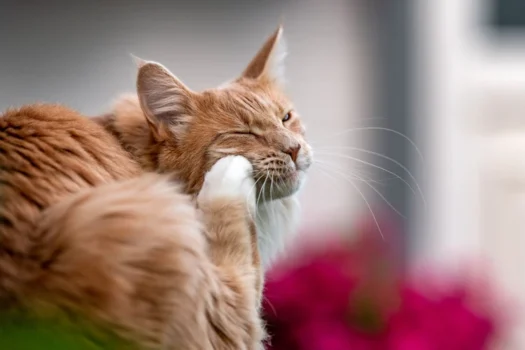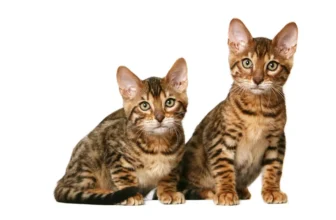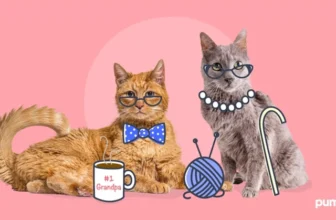As a proud owner of a California Spangled cat, you must have noticed how unique and exotic they look. Although their striking coat patterns may make them appear low maintenance, regular grooming is crucial to maintain their health and keep them looking their best. However, different cats can face different grooming issues, which might be perplexing and challenging to treat. In this article, we will delve into spotting and treating common grooming issues in California Spangled cats. From shedding to skin irritation, we’ll provide step-by-step guidance on how to recognize and diagnose these problems and give tips on how to treat and prevent them. So, sit tight and get ready to become the best groomer for your beloved feline friend.
Importance of grooming for California Spangled cats
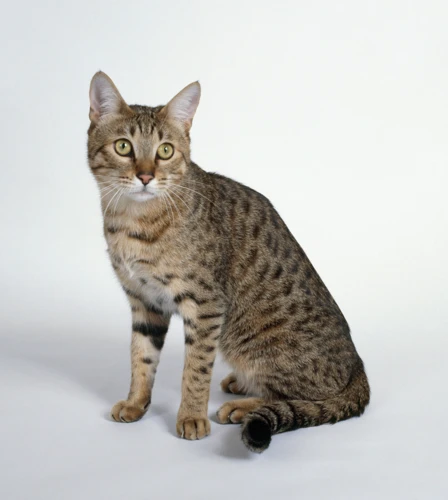
Regular grooming is essential for maintaining the health and well-being of California Spangled cats. Not only does grooming help to keep their fur shiny and tangle-free, but it can also prevent common issues like hairballs and skin irritation. As a responsible cat owner, it’s important to understand the benefits of grooming and how to properly care for your furry friend. Let’s explore some reasons why grooming is crucial for California Spangled cats and how you can take care of them to keep them healthy and happy. For more information, you can check the benefits of grooming.
Why grooming is important for cat health
Proper grooming is essential for the overall health and well-being of your California Spangled cat. Grooming helps to maintain their coat, skin, and nails while also providing an opportunity to check for any underlying health issues. Let’s take a closer look at some of the reasons why grooming is crucial for the health of your cat.
| Reason | Description |
|---|---|
| Prevent Hairballs | Regular grooming helps to remove loose hair and prevent the formation of hairballs in your cat’s digestive tract. Hairballs can cause intestinal blockages that can lead to serious health problems if left untreated. |
| Reduce Shedding and Mats | Grooming your cat regularly can help to reduce shedding and prevent the formation of painful mats in their fur. It also gives you an opportunity to check for any lumps, bumps, or skin conditions that may require immediate attention. |
| Improve Skin and Coat Health | Grooming helps to distribute natural oils throughout your cat’s coat, improving skin and coat health. This is especially important for California Spangled cats, whose short coats can easily become dry and irritated. |
| Prevent Parasites | Grooming also provides an opportunity to check for signs of fleas, ticks, or other parasites that can be harmful to your cat’s health. Early detection and treatment are crucial in preventing serious health problems caused by these pests. |
Regular grooming plays an important role in the overall health and happiness of your California Spangled cat. By establishing a grooming routine and using the right tools and techniques, you can ensure that your cat remains healthy and comfortable. To learn more about how to groom your California Spangled cat, check out our article on California Spangled grooming tips.
How grooming benefits California Spangled cats specifically
Regular grooming is essential for maintaining the health and well-being of California Spangled cats. Grooming helps to prevent the buildup of dirt, debris, and excess oil in their fur, reducing the risk of skin irritation and infection. It also improves overall blood circulation and stimulates the production of natural oils in their skin, keeping their coat soft and shiny.
California Spangled cats have short, dense fur that requires minimal grooming but can still benefit from regular brushing. Brushing their coat helps to remove dead hair, promote healthy oil production, and reduce shedding. Regular grooming also helps prevent hairballs from forming in their digestive tract by removing loose hair before it is ingested.
Grooming also gives you the opportunity to inspect your cat’s coat and skin for any signs of irritation, injury, or infestation. Early detection of these issues can help prevent more serious health conditions from developing.
Grooming can be a bonding experience between you and your California Spangled cat. It helps build trust and allows you to check for any sensitive areas or signs of discomfort. By creating a positive grooming experience, your cat will be more likely to cooperate during future grooming sessions.
To sum up, California Spangled cats benefit from regular grooming by reducing the risk of skin irritation and infection, promoting natural oil production, preventing hairballs, allowing for early detection of health issues, and strengthening the bond between you and your cat. If you want to know more about grooming California Spangled cats, check our detailed guide on grooming California Spangled cats.
Common Grooming Issues in California Spangled Cats

As much as we adore California Spangled cats for their stylish looks and playful personalities, grooming these felines can be a challenging chore. There are several common grooming issues California Spangled cat owners face that require special care and attention. From excessive shedding to skin dryness, these problems can make grooming sessions daunting. However, with the right tools, techniques, and preventive measures, you can address these issues effectively and keep your feline friend looking and feeling their best. Let’s explore some of the most common grooming problems faced by California Spangled cats. To learn more about regular grooming of California Spangled cats, click here. If you’re looking to train your California Spangled cat for grooming, click here. And, if you’re looking for the best grooming tools to use, click here.
Shedding
One of the most common grooming issues that California Spangled cat owners face is shedding. Shedding is a natural process in cats where they lose some of their fur as new hair growth replaces the old. However, excessive shedding can be a sign of an underlying health problem or nutritional deficiency.
Signs of shedding:
- Excessive hair on your clothes and furniture
- Bald patches on your cat’s skin
- Your cat grooming excessively
- Leaving hairballs around the house
To prevent shedding, it’s important to brush your cat regularly. A good brushing at least once a week can reduce the number of loose hairs on your cat and in your home. Using a rubber brush or grooming glove can also help to remove loose fur as you brush.
Additional tips:
- Feed your cat a high-quality, balanced diet to support healthy fur growth and reduce shedding.
- Ensure that your cat is properly hydrated with access to fresh water and wet food, which can also help to prevent excessive shedding.
- Consider using a shedding control shampoo when bathing your cat to help prevent and reduce excessive shedding.
- If you notice excessive shedding or bald patches, consult with your veterinarian to rule out any underlying health issues.
By following these tips and keeping up with regular grooming, you can keep your California Spangled cat looking and feeling their best, while minimizing shedding issues.
Knots and Mats
Knots and mats are common grooming issues that can cause discomfort and even pain for California Spangled cats. These tangles of hair can form when loose fur becomes tangled and knotted around other hairs, creating a tightly bound clump that can be difficult to remove. Here are some common causes, signs and solutions for this problem:
Causes:
- Lack of grooming: California Spangled cats are known for their independent nature and may not groom themselves as often as other breeds. This can lead to the buildup of loose hair that can cause mats and knots.
- Long hair: Unlike other breeds, the California Spangled cats have short hair. However, if a California Spangled cat has long hair, it can be more prone to matting and tangling.
- Humidity: High humidity can cause fur to clump together and create mats and tangles.
- Medical conditions: Certain medical conditions, such as arthritis or other mobility issues, can make it difficult for a cat to groom themselves properly, leading to matting and knots.
Signs:
- Appearance: Mats and knots are easy to spot visually. If you notice clumps of hair sticking out or matted fur, it’s time to take action.
- Discomfort: Cats may groom excessively in an attempt to remove mats and knots, leading to sore skin and even raw spots. They may also start scratching at the affected areas, leading to further irritation.
- Behavioral changes: A cat that is uncomfortable due to knots and mats may become irritable, avoid being touched, or stop grooming altogether.
Solutions:
- Brushing: Regular brushing can help prevent mats and knots from forming in the first place. If your California Spangled cat is prone to tangles, consider brushing them daily.
- Trimming: If a mat is too tight to remove with a brush or comb, it may be necessary to trim it with scissors. Be careful not to cut the skin underneath. If you are unsure, consider taking your cat to a professional groomer or veterinarian for help.
- Bathing: A warm bath can help loosen mats and tangles, making them easier to remove with a brush or comb. Use a cat shampoo and make sure to rinse thoroughly.
- Professional help: If your cat has severe matting or skin irritation due to knots, it may be necessary to seek professional help from a groomer or veterinarian.
Taking care of knots and mats promptly and efficiently will help keep your California Spangled cat healthy and happy. Regular grooming and attention to your cat’s habits and behavior will ensure that matting and tangles are spotted early and treated promptly.
Excessive Hairballs
Excessive hairballs are a common grooming issue for California Spangled cats, and can cause discomfort and digestive problems for your furry friend. Hairballs form when cats groom themselves and ingest loose fur, which accumulates in their stomach and can’t be digested.
Causes of Excessive Hairballs
Excessive hairballs can be caused by a few different factors, including:
| Cause | Description |
|---|---|
| Poor diet | If your cat’s diet lacks the necessary nutrients to maintain healthy skin and fur, they may shed more and experience more hairballs. |
| Lack of grooming | Cats who don’t groom regularly may develop more hairballs as loose fur accumulates on their coat. |
| Underlying health issues | Certain health issues, such as gastrointestinal problems or hyperthyroidism, can cause excessive grooming and hairballs. |
Symptoms of Excessive Hairballs
It’s important to recognize the symptoms of excessive hairballs so you can address the issue as soon as possible. Some common symptoms include:
- Coughing or gagging
- Vomiting
- Constipation or diarrhea
- Loss of appetite
- Lethargy
If you notice any of these symptoms, it’s important to seek veterinary attention to rule out any underlying health issues.
Treatment and Prevention
There are several steps you can take to prevent and treat excessive hairballs in your California Spangled Cat. Here are some tips:
- Regular grooming: Brush your cat regularly to remove loose fur and prevent it from accumulating in their stomach.
- Diet: Feed your cat a high-quality, balanced diet to promote healthy skin and fur.
- Hydration: Make sure your cat always has access to fresh water to help their digestive system function properly.
- Hairball prevention remedies: There are several hairball prevention remedies available, such as specialized food or supplements.
- Veterinary attention: If your cat is experiencing frequent or severe hairballs, it’s important to seek veterinary attention to address any underlying health issues.
By taking these steps, you can help prevent excessive hairballs in your California Spangled Cat and keep them healthy and happy.
Skin Dryness and Irritation
One common grooming issue that California Spangled cats may experience is skin dryness and irritation. This can be caused by a variety of factors, including allergies, parasites, and environmental factors like dry air. It’s important to spot the signs of skin dryness and irritation early on, so you can treat the problem before it becomes more serious.
Some signs that your cat may be experiencing skin dryness and irritation include excessive scratching, redness or flakiness of the skin, and hair loss in affected areas. If you notice any of these symptoms, it’s important to take action to alleviate your cat’s discomfort and prevent infection.
In order to diagnose the cause of your cat’s skin issues, you should take them to a vet. Your vet may recommend that you switch your cat’s diet, use hypoallergenic products, or prescribe medication to address the problem. In addition to these interventions, there are several other treatments and preventative measures you can take to keep your cat’s skin healthy and free from irritation:
| Treatment/Prevention | Description |
|---|---|
| Regular grooming | Grooming your cat regularly helps to distribute natural oils throughout their coat, which can help to prevent skin dryness and irritation. |
| Moisturizing shampoo | Using a moisturizing shampoo can help to soothe dry, flaky skin and prevent further irritation. |
| Natural remedies | Soothing, natural ingredients like oatmeal, aloe vera, and coconut oil can be effective in treating skin dryness and irritation in cats. |
| Humidifier | If you live in a dry climate, using a humidifier can help to add moisture to the air and prevent skin dryness in your cat. |
Ultimately, the key to tackling skin dryness and irritation in California Spangled cats is to stay vigilant and take action as soon as you notice any concerning symptoms. By following a regular grooming routine and incorporating the right products and preventative measures, you can help to keep your cat’s skin healthy and comfortable.
Spotting and Diagnosing Issues
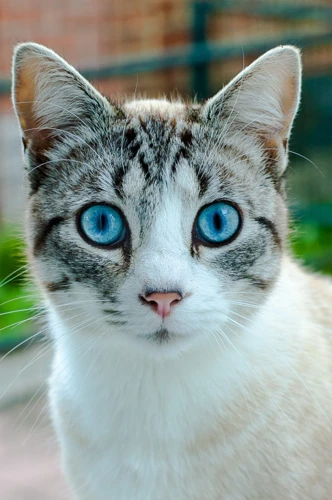
When it comes to grooming your California Spangled cat, it is important to be able to spot and diagnose any potential issues. This will allow you to take action quickly and ensure your furry friend stays happy and healthy. In this section, we will explore how to recognize shedding issues, identify knots and mats, spot hairball problems, and identify skin dryness and irritation. By learning to spot these issues early on, you can ensure your cat gets the best possible care. Let’s dive in.
How to recognize shedding issues
Shedding is a natural process for cats. However, excessive shedding can be a sign of an underlying issue. Here are some signs to look out for to recognize shedding issues:
| Signs | What it may indicate |
|---|---|
| Increased shedding | Can be caused by stress, improper diet, skin conditions, and more. |
| Bald patches or thinning fur | Can be a sign of allergies, parasites, or underlying health issues. |
| Visible dandruff or flaky skin | May indicate skin inflammation or dryness. |
| Unusual behavior, such as excessive licking or scratching | May indicate discomfort and itching caused by skin conditions or allergies. |
If you notice any of these signs, it’s important to consult with a veterinarian to rule out any health issues. Giving your California Spangled cat a healthy diet and a regular grooming routine can help minimize shedding and keep their coat healthy and shiny.
How to tell if your cat has knots and mats
Knots and mats in a cat’s fur can cause discomfort and even pain. It’s important to be able to identify them quickly so you can take action. Here are some ways to tell if your California Spangled cat has knots and mats:
| Signs of knots and mats | Possible causes |
|---|---|
| Tangled hair | Failure to groom themselves properly, or not being brushed or combed regularly |
| Changes in coat texture | Wavy or matted hair instead of the usual smooth texture |
| Bald patches | Constant scratching or chewing at the matted fur may cause some hair to fall out |
| Unpleasant odor | The trapped dirt and oils in the matted fur can cause a bad smell |
| Visible tangles and mats | Some knots and mats may be visible on the surface of the fur, while others may be hidden underneath |
If your cat is showing any of these signs, it’s important to address the issue as soon as possible. Knots and mats can lead to skin irritation and even infection if left untreated. Regular grooming and brushing can prevent knots and mats from forming in the first place.
Identifying hairball problems
Hairballs are a common problem among cats, and California Spangled cats are no exception. It’s important to be able to identify when your cat is experiencing hairball problems so you can take action to prevent them in the future. Here are some signs to look out for:
- Excessive grooming: If you notice your California Spangled cat is grooming itself more than usual, it could be a sign of hairball issues. Cats groom themselves to remove excess hair from their coats, but when they ingest too much hair, it can form hairballs in their digestive system.
- Coughing up hair: A clear sign that your cat is experiencing hairball problems is if it starts coughing up hairballs. These clumps of hair can be found all around your house, so keep an eye out for them.
- Lack of appetite or vomiting: Hairballs can cause an upset stomach, which can lead to your cat not wanting to eat or even vomiting. If you notice these symptoms alongside the other signs, it’s a strong indication that hairball problems are present.
Hairball issues can be uncomfortable for your cat, so it’s essential to take steps to prevent them. Regular grooming, especially during shedding season, can help to remove excess hair before it’s ingested. Using specially formulated hairball prevention food can help too, as well as adding fiber or oil to your cat’s diet to aid in digestion.
How to spot skin dryness and irritation
Skin dryness and irritation can be common grooming issues for California Spangled cats. Owners should keep an eye out for the following signs to identify this issue:
- Flaky Skin: Dry skin can result in flakes or dandruff appearing on your cat’s coat. Check your cat’s fur regularly for any signs of flakiness or dryness.
- Itching and Scratching: A cat with dry skin may also feel itchy. Watch your cat’s behavior and take note if they are scratching more than usual or constantly licking their fur.
- Bald Patches: If your cat is excessively grooming themselves in response to dry skin, they may inadvertently pull out clumps of fur, resulting in bald patches.
- Skin Discoloration: Sometimes, areas of dry skin can also become discolored or inflamed, resulting in redness, rashes, or even scabs.
- Odor: In some cases, skin dryness and irritation can result in an unpleasant odor emanating from your cat’s coat.
If you believe your California Spangled cat is experiencing dry skin, it’s important to take the necessary steps to treat and prevent the issue.
Treatment and Prevention for Common Issues

As a devoted California Spangled cat owner, keeping your feline friend healthy and happy is a top priority. Ensuring your cat is well-groomed is essential for their overall wellbeing, but despite our best efforts, some common grooming issues can still arise. Shedding, knots and mats, excessive hairballs, and skin dryness and irritation are all common concerns for cat owners. Fortunately, with the right treatment and prevention methods, you can keep your California Spangled cat looking and feeling their best. Let’s explore some tips and tricks for addressing these common grooming issues.
Brushing and bathing tips for shedding
It is common for California Spangled cats to experience shedding, which can lead to hair being left all over the house. However, there are ways to manage this common grooming issue. The following table outlines some brushing and bathing tips to help control shedding.
| Tip | Description |
| Regular brushing | Brush your California Spangled cat’s coat regularly, ideally every day, to remove loose hair. Use a soft bristle brush or a comb designed for cats to avoid hurting their skin and to make sure that all spots are covered. |
| Bathing | Occasional baths are recommended to help control shedding. Use a mild cat shampoo and warm water. Be careful to avoid getting water in your cat’s ears and eyes and to rinse the shampoo out thoroughly to avoid skin irritation. |
| Dietary supplements | Supplements like omega-3 fatty acids can help promote healthy skin and coat, leading to less shedding. Consult with your veterinarian to determine the right supplement and dosage for your cat. |
| Regular check-ups | It is important to take your California Spangled cat for regular check-ups with a veterinarian to check for underlying health issues that could be causing excessive shedding. |
By following these tips, you can manage shedding and keep your home relatively free from cat hair. However, be prepared for some shedding, as it is natural and healthy for cats to shed their fur.
Detangling knots and mats
Knots and mats can be a common issue for California Spangled cats, especially those with longer hair. These tangles can be uncomfortable and even painful for your furry friend. It is important to regularly check for knots and mats and detangle them as soon as possible.
Here are some tips for detangling knots and mats in your California Spangled cat’s fur:
| Tip | Description |
|---|---|
| 1. Use the right tools | It’s important to have the proper tools on hand, including a comb, slicker brush, and possibly even clippers. The comb and slicker brush can help to gently loosen tangles, while clippers may need to be used for more severe mats, but only if you’re comfortable doing so. |
| 2. Start at the bottom | When detangling, it is important to start at the bottom of the knot or mat and work your way up. This will help prevent pulling on your cat’s skin and causing discomfort. Use a comb to gently loosen the tangle, and then use the slicker brush to gently work through it. |
| 3. Be patient | Detangling knots and mats can be a time-consuming process, especially if they’re large. Be patient and take breaks as needed to ensure that you’re not causing pain or discomfort to your cat. |
| 4. Use detangling spray or conditioner | Using a detangling spray or conditioner can help to loosen knots and make them easier to remove. You can also try using a diluted solution of white vinegar and water, as this can help to break down the tangles. |
| 5. Consider professional grooming | If you’re having trouble detangling knots and mats at home, or if they’re particularly severe, it may be best to take your California Spangled cat to a professional groomer. They will have the expertise and tools needed to safely and effectively remove the tangles. |
By following these tips and regularly grooming your California Spangled cat, you can help prevent knots and mats from becoming a bigger issue and ensure that your furry friend stays comfortable and healthy.
Preventing hairballs with diet and grooming
Hairballs are a common issue among California Spangled cats, but it can be easily prevented with the right diet and grooming routine. Cats groom themselves by licking their fur, which can lead to them ingesting loose hair. The hair then accumulates in the cat’s stomach, forming a hairball. These hairballs can cause discomfort, vomiting, and even obstruction in the digestive tract. Here are some tips on how to prevent hairballs in your California Spangled cat.
Diet: A healthy diet can help prevent hairballs. Feeding your cat high-quality food, rich in fiber can help move hair quickly through the intestine, preventing it from forming into a hairball. You can also add a teaspoon of pumpkin to your cat’s food, which can provide additional fiber to aid digestion.
Grooming: Regular grooming will remove loose fur before your cat has a chance to ingest it. Brush your cat’s fur at least once a day for long-haired cats and twice a week for short-haired cats. Use a comb or brush to remove loose fur, and pay attention to areas that usually accumulate knots, such as the legs, belly, and tail. If your cat does not like brushes or combs, use a grooming glove, which can serve the same purpose.
To provide a clear and concise guide, here’s a table summarizing the prevention methods for hairballs in California Spangled cats:
| Prevention Method | Description |
|---|---|
| Diet | Feed high-quality food, rich in fiber, and add a teaspoon of pumpkin. |
| Grooming | Brush your cat’s fur at least once a day for long-haired cats and twice a week for short-haired cats. Use a comb or brush to remove loose fur, and pay attention to areas that usually accumulate knots, such as the legs, belly, and tail. Use a grooming glove if your cat does not like brushes or combs. |
Remember, the prevention of hairballs benefits not only your California Spangled cat’s health but also your wallet. It removes the need for expensive veterinarian procedures. By incorporating these tips into your cat’s diet and grooming routine, you can prevent hairballs and keep your furry friend happy and healthy.
Remedies for skin dryness and irritation
Skin dryness and irritation can be uncomfortable for California Spangled cats and cause them to lick and scratch excessively. Here are some remedies to help soothe and heal their skin:
| Remedy | Description |
|---|---|
| Moisturizing shampoos and conditioners | Using cat-specific moisturizing shampoos and conditioners can help hydrate and soothe dry and irritated skin. Look for products that contain natural ingredients such as aloe vera or oatmeal. |
| Olive oil or coconut oil | Applying a small amount of olive oil or coconut oil to dry areas can help provide hydration and relief. Massage the oil into the skin and leave it on for a few hours before rinsing off with warm water. |
| Vitamin E oil | Vitamin E oil can be applied directly to dry and irritated areas to help soothe and heal the skin. Prick open a vitamin E capsule and apply a small amount to the affected area. |
| Humidifier | Using a humidifier can help add moisture to the air and prevent skin dryness in California Spangled cats. |
| Veterinarian-prescribed medication | If the skin dryness and irritation persist or worsen, it’s important to consult with a veterinarian. They may prescribe a topical cream or oral medication to help alleviate the symptoms. |
It’s important to note that prevention is always the best course of action. Regular grooming sessions can help prevent skin dryness and irritation by removing excess fur and distributing natural oils throughout the coat. Additionally, feeding your California Spangled cat a high-quality diet can help keep their skin and coat healthy.
Additional Grooming Tips for California Spangled Cats
As a California Spangled cat owner, it’s important to keep in mind that grooming is not just about maintaining the health of your beloved pet, but also about enhancing their overall well-being. In this section, we will go over some additional grooming tips that will help you keep your cat happy, healthy, and looking fantastic. From nail trimming to dental care, we’ve got you covered with everything you need to know to be a pro at grooming your feline friend. So, let’s get started!
Nail trimming and dental care
It is important to not only keep your California Spangled cat’s coat looking great, but also to ensure their nails and teeth are healthy. Nail trimming can be a tricky task, but it prevents overgrown nails that can snag on furniture or carpets and cause pain to your furry friend.
To trim your cat’s nails, gently hold their paw and use a pair of cat nail clippers to carefully trim the tip of each nail, being careful not to cut too close to the quick (the pink part inside the nail). If you’re unsure, consult with your veterinarian or a professional groomer for guidance.
Dental care is also crucial for your California Spangled cat’s overall health. Regular dental checkups with a veterinarian can help prevent or identify any dental issues. You can help prevent dental problems by brushing your cat’s teeth and providing them with dental treats or toys.
To brush your cat’s teeth, use a soft-bristled toothbrush and veterinary-approved toothpaste. Gently open your cat’s mouth and brush their teeth in a circular motion, focusing on the back teeth where plaque can build up. Start slowly and reward your cat with treats to make the process more enjoyable for them.
Providing your California Spangled cat with proper nail trimming and dental care can improve their overall health and happiness.
Grooming for outdoor cats
It’s important to note that outdoor California Spangled cats may require extra grooming compared to indoor cats. Being exposed to the elements means they are more prone to dirt, debris, and tangles in their fur. Here are some tips for grooming outdoor cats:
- Regular brushing: Regular brushing is important for outdoor cats as it helps remove any dirt, debris, or tangles that may accumulate in their fur. This also helps reduce the risk of hairballs and keeps their coat shiny and healthy. It is recommended to brush them at least twice a week, preferably with a slicker brush or a metal comb.
- Bathing: Bathing an outdoor cat only needs to be done if their fur is excessively dirty or they have gotten something in their fur that cannot be brushed out. It is important to use a cat-specific shampoo and to avoid getting any water or soap in their eyes or ears. Towel-dry them and make sure they are completely dry before letting them outside.
- Pest control: Outdoor cats are more susceptible to fleas, ticks, and other pests. Make sure to use flea and tick prevention methods as recommended by the veterinarian. Regularly check for any signs of pests or irritation on their skin or fur.
- Nail trimming: Outdoor cats may need their nails clipped more frequently as they use them for climbing and hunting. Regular nail trimming using cat-specific clippers or scissors can help prevent overgrowth and injury.
- Check for injuries: Outdoor cats are more prone to injuries such as scratches or cuts. Regularly check their skin for any cuts, wounds, or insects bites. If you notice any injuries, consult with your veterinarian for proper treatment.
By following these grooming tips, you can help keep your outdoor California Spangled cat healthy, clean, and happy.
Choosing the right grooming tools
When it comes to grooming your California Spangled cat, choosing the right tools is as important as using them correctly. Here are some tools that are essential for keeping your cat’s coat healthy and shiny:
- Bristle brush: This is the most common type of brush used for cats. The bristles help to remove loose hair and dirt from the coat, and distribute natural oils throughout the fur. It’s best for cats with short to medium length hair.
- Slicker brush: This type of brush has fine, short wires close together, making it perfect for removing knots and mats from the coat. It’s also good for cats with long hair.
- Comb: A wide-toothed comb is perfect for detangling knots and preventing mats from forming. A flea comb is also useful for removing any fleas or flea dirt from your cat’s coat.
- Nail clippers: Trimming your cat’s nails is important to prevent them from growing too long and causing discomfort or even injury. Use specially designed nail clippers for cats to avoid cutting the quick.
- Toothbrush and toothpaste: Dental care is often overlooked when it comes to cats, but it’s important to maintain their oral health. Use a toothbrush and toothpaste designed for cats to keep their teeth and gums healthy.
Keep in mind that not all grooming tools are created equal. Be sure to choose high-quality tools that will last and won’t harm your cat’s skin or coat. It’s also important to regularly clean and sanitize your tools to prevent the spread of bacteria or infection. By using the right grooming tools and techniques, you can help keep your California Spangled cat healthy and happy.
Conclusion
After all is said and done, grooming is an essential part of the care routine for any California Spangled cat owner. Keeping your cat properly groomed can prevent a variety of common issues, such as shedding, knots, mats, hairballs, skin dryness, and irritation, all of which can negatively impact your cat’s health and well-being.
It’s important to remember that each cat is unique, and what works for one may not work for another. When it comes to grooming your feline friend, it’s essential to experiment with different tools, products, and techniques to find what works best for them. Pay attention to your cat’s body language and behavior to ensure that they’re comfortable during grooming sessions.
Regular grooming can also provide an opportunity to bond with your cat and monitor their overall health. Brushing and examining your cat’s coat regularly can help you detect any changes that may indicate an underlying health issue.
Finally, don’t hesitate to consult with your veterinarian if you’re unsure about how to groom your California Spangled cat or if you notice any unusual changes in their coat or behavior. Your vet can provide additional guidance and recommend appropriate treatments if necessary.
In conclusion, taking the time to groom your California Spangled cat can lead to a happier, healthier feline companion. By being attentive and proactive to your cat’s grooming needs, you can ensure that they look and feel their best, and enjoy a long and happy life by your side.
Frequently Asked Questions
Can California Spangled cats have hair length issues?
Yes, some California Spangled cats may have longer hair than others. Regular grooming may help alleviate any issues that may arise from longer hair.
Are California Spangled cats prone to hairballs?
Yes, California Spangled cats are prone to hairballs due to their thick fur. Regular grooming and a balanced diet can help prevent hairball issues.
Can California Spangled cats experience skin irritation?
Yes, like all cats, California Spangled cats can experience skin dryness and irritation. Regular grooming and using the appropriate treatments can help alleviate any issues.
Do California Spangled cats require daily grooming?
It is recommended to groom your California Spangled cat at least once a week to ensure their coat remains healthy and free of any issues.
Can shedding be prevented in California Spangled cats?
No, shedding is a natural process for cats. However, regular grooming can help minimize shedding issues in California Spangled cats.
What tools are best for grooming California Spangled cats?
Slicker brushes, combs, and shedding blades are all effective tools for grooming California Spangled cats, but it ultimately depends on their individual coat type. Consult with your veterinarian or groomer for the best tools for your cat.
How often should California Spangled cats get their nails trimmed?
California Spangled cats should have their nails trimmed every few weeks to prevent them from getting too long and causing discomfort or damage.
Can dental care be considered part of grooming for California Spangled cats?
Yes, dental care such as brushing your cat’s teeth or providing dental treats can be considered part of grooming for California Spangled cats.
Can outdoor cats face different grooming issues?
Yes, outdoor California Spangled cats may face additional grooming issues such as ticks, fleas, and dirt buildup. Regular grooming and preventative measures can help alleviate these issues.
Is professional grooming necessary for California Spangled cats?
No, professional grooming is not necessary for California Spangled cats as long as they are groomed regularly at home. However, some owners may choose to take their cats to professional groomers for convenience or extra grooming services.

